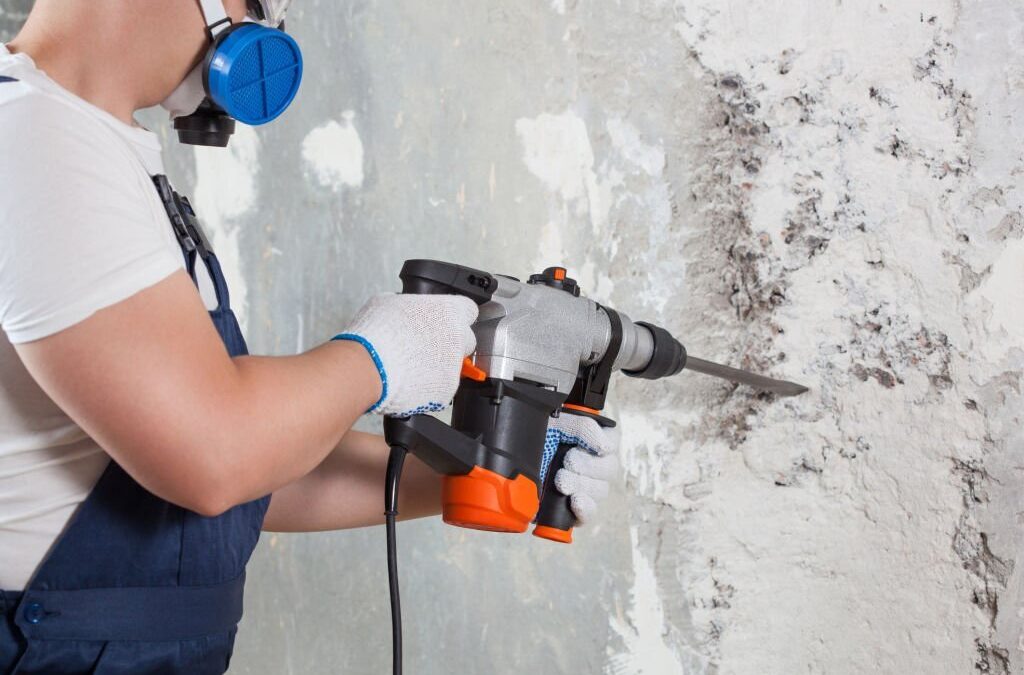If you’re a DIY enthusiast, drilling into concrete might seem intimidating, but it’s doable with the right tools and techniques. Whether you need to install shelves, hang pictures, or run electrical wires, knowing how to drill into concrete is an important skill.
We’ll take you through how to drill into concrete step-by-step. We’ll cover everything from choosing the right drill bit and marking and securing your drilling site. With our tips and tricks, you can successfully drill into the concrete like a pro. So, let’s get started!
Choosing the Right Drill Bit
To succeed in your drilling task, choosing the appropriate bit is crucial. When drilling into hard materials such as concrete, brick, and stone, it’s recommended to use a masonry bit. These bits are specifically designed with a carbide tip that can endure the hardness of concrete, ensuring a clean hole without dulling or breaking.
When choosing a masonry bit, consider the hole size you must make. The size of the bit will determine the size of the hole, so make sure to choose a bit that is the right size for your project. It’s also important to consider the length of the bit. If drilling a deep hole, you’ll need a more extended bit to reach the desired depth. Taking the time to choose the right bit will make your drilling process more accessible and successful.
Marking and Securing Your Drilling Site
Before drilling, it’s essential to mark and secure your drilling site to avoid accidents or damage to the surroundings. Use a pencil or marker to indicate where you want to drill. You can also use a level to ensure your markings are straight and even. Attach a clamp or stand to the surface to prevent the drill from slipping or moving during the drilling process.
Additionally, ensure that your drilling site is free of any debris or obstacles that might interfere with the drilling process. Remove any loose or hanging objects from the area and check for pipes or wires hidden beneath the surface. These precautions will help ensure the success of your project and prevent injuries during the drilling process.
Drilling into Concrete: Step-by-Step Guide
To penetrate solid concrete, it’s essential to master the correct techniques and tools. The first step is to ensure that you have the appropriate drill bit. Masonry bits are specifically designed for drilling into hard materials like concrete, and their carbide tip can withstand the hardness of concrete, producing a clean hole.
Once you have the correct bit, firmly insert it into your drill and adjust it to the appropriate speed and torque. When drilling into concrete, it’s crucial to take your time and apply even pressure while using a steady hand to guide the drill. Keeping the drill perpendicular to the concrete’s surface is key to avoiding any damage or uneven holes. By following these techniques and using the right tools, you can confidently drill into concrete for any project.
Tips and Tricks for Successful Concrete Drilling
When successfully penetrating solid concrete, you’ll want to make sure you have the right type of drill bit and a slow and steady approach to keep the drill perpendicular to the surface and avoid any damage or uneven holes. In addition to these basic steps, a few tips and tricks can help you achieve even greater success when drilling into concrete.
One important tip is to use a hammer rather than a regular drill. Hammer drills are designed specifically for drilling into hard materials like concrete, and they use a hammering action to break up the surface as you drill. This makes it much easier to penetrate the concrete and helps to prevent the drill bit from getting stuck. Another helpful trick is to use a lubricant like oil or grease on the drill bit, which can help to reduce friction and heat buildup as you work. With these tips and tricks in mind, you should be able to tackle even the toughest concrete drilling jobs with confidence and ease.
Trust the Experts
For all your concrete drilling and installation needs, trust the experts at Gatlinbyrd Cement. As an experienced concrete company, we have the tools, materials, and know-how to handle even the toughest concrete drilling projects with precision and care. Whether you’re a DIY enthusiast looking to install shelves or a property owner in need of professional concrete services, our skilled concrete contractors are here to guide you through the process and ensure a successful outcome. Contact Gatlinbyrd Cement today to learn more about our comprehensive concrete services and how we can help with your next concrete drilling or installation project.
Contact Us Now
Frequently Asked Questions
What type of drill should I use for drilling into concrete?
For drilling into concrete, a hammer drill is highly recommended because it combines rotary action with a hammering thrust to penetrate tough materials more effectively than a standard drill.
Can I use a regular drill instead of a hammer drill for concrete?
While it's possible with the right masonry bit, a regular drill might struggle and take much longer. It's not ideal for harder or thicker concrete.
What are masonry bits and why are they necessary for concrete?
Masonry bits are drill bits designed specifically for drilling into hard materials like concrete, brick, and stone. They feature a carbide tip that can withstand the material's hardness, ensuring effective drilling without damage.
How do I choose the right size masonry bit?
Choose a bit that matches the diameter of the hole you need to drill. Consider the screw or anchor size that will go into the hole, ensuring the bit is appropriately sized for the task.
What safety precautions should I take when drilling into concrete?
Wear safety goggles to protect your eyes from dust, ear protection for noise, and a dust mask to avoid inhaling concrete particles. Ensure your work area is clean and well-lit.
Is it necessary to apply pressure when drilling into concrete?
Yes, applying steady pressure is necessary, but let the drill do most of the work. Too much force can break the bit or damage the concrete.
How do I know when to stop drilling?
Mark the desired depth on the drill bit with tape as a guide. Stop drilling when the tape reaches the surface of the concrete.

